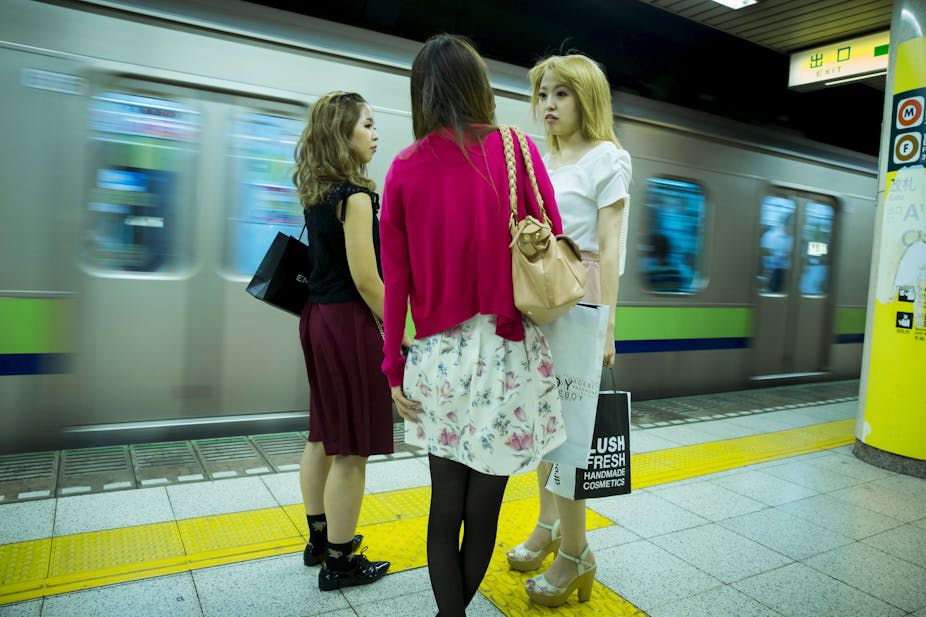After Labour Party leadership candidate Jeremy Corbyn raised the idea of women-only carriages on trains the idea has been variously described as a “backward step for women”, or “another form of victim blaming”, and even compared to apartheid. The harassment women experience in public spaces and what to do about it is a highly emotive subject, so why dismiss the idea outright?
British Transport Police figures record a 25% increase in reported sexual offences which, while it may seem alarming, does not surprise me. Research suggests that crime is particularly under-reported on public transport, for several reasons. It is difficult to report crime on a moving vehicle, and it’s not always clear who to report it to, or may not seem worthwhile after the event, as nothing will be done. Transport staff may not report harassment for similar reasons. Figures from TfL suggest 93% of those experiencing sexual harassment or assault on public transport did not report it.
Between 2013 and 2014 the British Transport Police (BTP) ran two major high profile campaigns, Project Guardian and Report it to Stop it, to encourage greater reporting of violent and sexual offences, particularly against women. So with this in mind, increased reports of crime suggests these campaigns are succeeding. But an initial spike in reports is common; it’s only over a longer period that a scheme’s success can be judged.
Precise crime figures aside, the question is what to do about it. Crime prevention generally doesn’t work well as a one-size-fits-all solution, and evidence for women-only carriages is mixed. The arguments against women-only carriages, used in Iran, Japan, India, the UAE, Egypt, and Brazil, are that they may increase victim blaming, could be seen as disempowerment rather than safety, and that women in mixed spaces when women-only spaces are available may be seen as “asking for it”. Nor do they do anything to tackle assaults against male passengers.
Let’s be absolutely clear: victim-blaming is in no way acceptable, and we must encourage people to report crimes committed against them, and require operators and the police to take steps to tackle the problem. However, consider a poll by Reuters that suggested 45% of women would feel safer in women-only carriages, especially at night.
Different spaces
Public transport is different to other public spaces. Inside a moving carriage a passenger is in effect a captive, placed alongside unfamiliar people in a confined space, with little control over where and when they can move, and who gets on and off a carriage. It’s not like a customer in a bar, who can leave at any time if they feel unsafe, or a pedestrian who can take alternative routes if they prefer.
Research has shown people are more likely to intervene if they see a crime when in familiar places, so those victims of assaults on transport and those that could potentially help them are often all in unfamiliar territory. Research shows people feel more unsafe waiting for public transport at stops and stations than on transport. And unsurprisingly it is women, the elderly, young people and those with disabilities who report feeling most vulnerable at any stage of their journey. So if we want to encourage greater use of public transport, we need to make all users feel safe.

Consider that trains at certain times are extremely congested, with many people squeezed close to each other, while at other times trains are nearly empty. The first may give rise to concealed groping, the second raises concerns of overt, violent assaults – women-only carriages could be a practical solution to both, today. While they are seen as a backwards step in many western countries, they have been effective in other countries – and in fact existed in the UK until they were abolished in 1977.
So yes, groping and harassment of women on transport is not acceptable and we need a culture change. And the logistics of introducing segregated carriages is challenging: I am not calling for them to be introduced across all buses and trains. Who would enforce them? What would be done about the problem at station platforms or bus stops? India, Nepal and Mexico operate women-only bus routes, while Rio has pink women-only train carriages.
Universities often run free night minibuses to carry female students to their homes. Should similar provisions be made at certain times of day or night? Should we dismiss the idea so readily?
I’m not suggesting women-only carriages are the solution, but I feel they deserve a fuller debate than they’ve been afforded. At the very least the attention the issue has received is focusing attention on the problem, which can only be a good thing.

